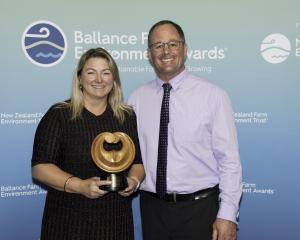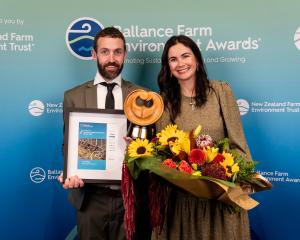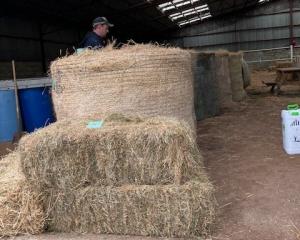
The Black family stud Blackdale at Ermedale is one of three Texel studs which will open its farm gates to the public during the Southern Texel Breeders field day.
The open day is to be held on November 8, starting at 1.30pm.
Blackdale is owned by Peter, his wife Marion, son Leon and Leon's wife Wendy Black.
The Blacks have been breeding rams on the property for 50 years, with the Texel stud operating since the first release of Texels in New Zealand.
''The Texel genetic attributes have been utilised to develop Texel coopworth, suftex and textra fully performance recorded ram breeding flocks which in total supply around 600 sale rams annually,'' Peter said.
''In 2013 it was discovered the Blackdale flocks had some animals carrying the GDF9 genetic mutation, which increases fertility by around 20% NLB [number of lambs born],'' he said.
An extensive DNA testing programme has been implemented to expand the base of carrier animals with good success, he said.
For the past two years, a top British Texel sire had been used through artificial insemination with very pleasing results being obtained, he said.
Sons and grandson of the sire will be on display at the field day.
Also on show for the day will be beltex sired lambs on suftex dams.
Beltex were an offshoot of Texel sheep from Belgium.
The second property to be visited will be Wilson and Gaylene Ronald's farm at Fairfax.
''Wilson is a well-known and hardworking scanner of sheep and cattle but Gaylene does a mighty job of keeping the farm running,'' he said.
Using a Texel coopworth flock bought in as hoggets and mated back to Texel rams as terminal sires, the farm ticked all the boxes for high productivity and superior lamb production, Peter said, ''with the result that the Alliance Group nominated the Ronalds twice as their top suppliers to be finalists in the sheep industry supplier of the year awards.''
At 4.30pm the tour will move to the Gray family Hillgrove stud at Orawia.
Arnie, Fiona and son Robert run 7000 ewes over two properties. This includes 600 recorded ram breeding ewes of Texel, suftex, romtex and Romney.
The Grays worked with Dr George Davis, from Invermay, to develop the Inverdale and Davisdale fertility genes.
Half of their Texel and romtex ewes carry the Inverdale gene, which influences the number of lambs born per pregnancy as well as ewe fertility, and the Romney ewes the Davisdale gene.
''A sample of ram hoggets and ewe and lambs will be available for inspection.''

- The Texel originated on the island of Texel above Holland in the North Sea.
- Because of the harsh and often bleak conditions they had to develop invaluable characteristics.
- They have gained the ability to thrive despite a short growing season and often poor quality pasture, meaning they have had to become very efficient at feed conversion and growing no waste.
- It is well known in many countries as a breed which transmits its qualities to its progeny when used for crossing purposes.
- The Texels imported into New Zealand were sourced from Denmark and Finland because of their scrapie-free status.
- They were released from quarantine in 1990.
— New Zealand Sheep Breeders Association















